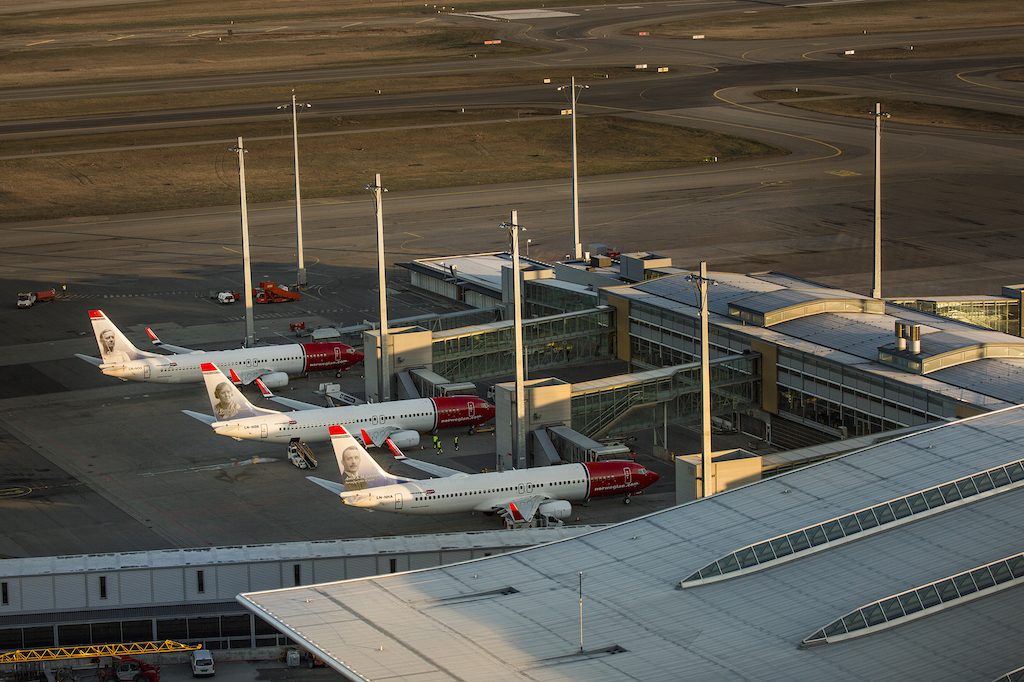What Norwegian Air Learned From Its Near-Death Experience

Photo Credit: Norwegian Air endured more than its share of turmoil in the first half of 2021. Norwegian
Norwegian Air ended the first half of this year a leaner airline — much leaner, as it ended its longhaul ambitions and reduced its workforce by 6,000 employees. Almost one-quarter of the airline's remaining 3,000 employees remain furloughed, though CEO Geir Karlsen believes they will be recalled by the end of October.
Norwegian Air endured quite a bit of tumult during the first half of this year, prompting questions of its very survival. In January, the carrier announced it would scuttle its longhaul routes, ending almost a decade of rampant expansion to North America, Asia, and Argentina. It shed its fleet of Boeing 787s (many of which are now being acquired by startup Norse Atlantic, which aims to take Norwegian's longhaul mantle). After ousting founder Bjorn Kjos last year, the carrier's board in June also booted CEO Jacob Schram, who led the airline's through its bankruptcy proceedings, naming Karlsen, who had been chief financial officer, to the top job. And in May, Norwegian exited restructuring.
It's a much smaller carrier than it was. The airline now has a fleet of 51 Boeing 737-800s, many of which remain parked. It started the year with 10 in operation, which rose to 40 by the end of August. Karlsen expects to have the entire fleet back in service by the end of this year. During the half and while in bankruptcy, Norwegian negotiated "power-by-the-hour" deals with its lessors, giving the airline more flexibility in how it utilizes aircraft. This will allow it to scale back during the winter slump without incurring aircraft ownership costs. But these deals also will allow Norwegian to scale up capacity quickly and at lower cost as demand returns. Lessors have agreed to power-by-the-hour deals through the end of the first quarter of next year. By then, Karlsen said, Norwegian should be well on the road to recovery and will not need the flexibility.
The carrier is making a break with its past practice and will be more aggressive in managing capacity during the winter slump, Karlsen said. "We are losing way too much money in the low season," he said. "We will park aircraft during the winter," he said, adding, "We are not good enough compared with the best in class," in efficiently managing utilization during the low season.
Norwegian also plans to add more capacity next year through fleet growth. Karlsen expects the carrier to add between 10-20 aircraft by the end of next year, although he did not define a precise number nor did he identify what kind of aircraft the carrier may seek. The carrier is in active discussions with lessors for new lift, and Karlsen noted the leasing market is "heating up." Norwegian does not currently have any aircraft on order, after having cancelled as many as 185 orders during its restructuring. It is in contentious negotiations with Boeing for financial compensation due to the Max grounding and the cancellation of Norwegian's remaining orders. Norwegian had 18 Maxes in its fleet before the March 2019 grounding.
But, despite the tumult, Norwegian predicts the rest of the year and the first half of 2022 will be a period of recovery. The booking curve is lengthening, but remains shorter than it was before the pandemic. Demand started to recover in June and strengthened through August. September bookings are "still not enough, but it's very good," Karlsen said. Fares also are rising. "We are seeing very good signs," Karlsen said. "They are still not good enough, but definitely moving in the right direction." Credit card holdbacks remain problematic, but Karlsen expects this situation to return to normal by early next year.
Norwegian ended the first half of the year with NOK7.5 billion ($863 million) in cash, with the bulk of its debt "taken out" during the restructuring process, Karlsen said. "We have created a company with the right fleet, the right balance sheet, and the right debt." One item of value the carrier highlighted is its slots at London Gatwick, which it hopes to keep and expects to rise in value as the pandemic recedes, Karlsen said.
Norwegian reported a pre-tax profit of NOK1.5 billion, compared with a NOK4.8 billion pre-tax loss in the first half of last year. Capacity was down by 94 percent compared with last year, as the carrier ceased longhaul flying. Revenues at the much smaller Norwegian were NOK591 million, down 92 percent from last year's NOK7.1 billion. Unit revenues, however, were up by 22 percent, Karlsen said.
